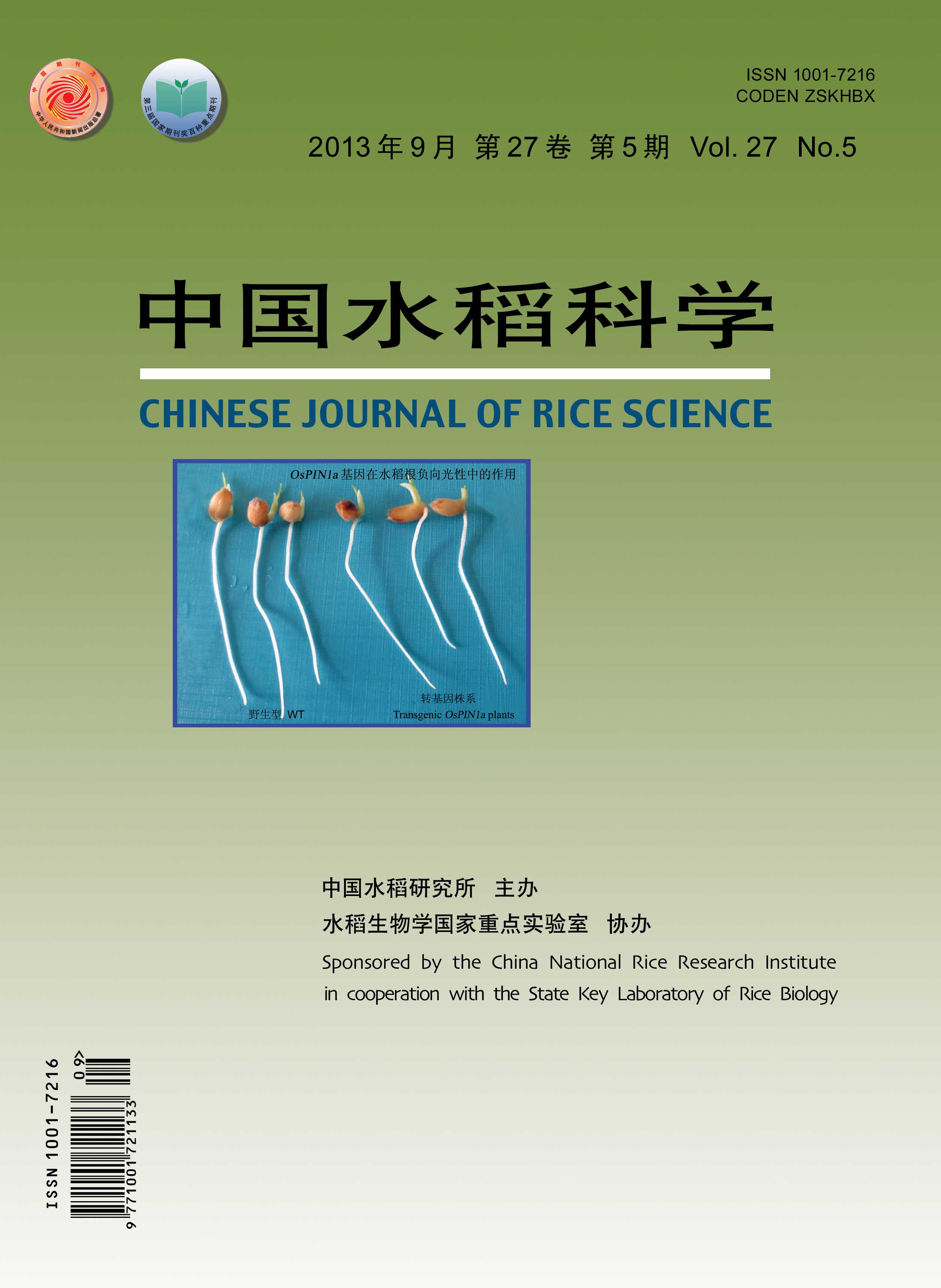|
|
Detecting Marker Genotypes with Elite Combining Ability for Yield Traits in Parents of Hybrid japonica Rice
LIU Erbao1, LIU Yang1, LIU Xiaoli1, LIU Qiangming1, ZHAO Kaiming1,2, EDZESI Wisdom Mawuli1, HONG Delin1,*
2013, 27(5):
473-481.
DOI: 10.3969/j.issn.1001-7216.2013.05.004
The key factor to speeding up hybrid development is to enhance competitive heterosis in japonica rice,which depends on improving the combining ability for yield traits of the restorers. In order to improve combining ability of restorer lines more efficiently, SSR marker genotypes with elite combining ability for 12 traits were detected. The combining ability was analyzed and SSR markers were genotyped in 11 MS lines and 9 restorer lines using 152 pairs of SSR primers. Combining ability of the 20 parental lines was analyzed for heading date, plant height, panicle number per plant, panicle length, number of spikelets per panicle, number of filled grains per panicle, seed setting rate, grain length, grain width, grain thickness, 1000grain weight and daily yield per unit area using the data of 99 F1s made with NCII genetic design. Results showed that 1004S was the best MS line, and LR5, Yanhui R50, LC64 were superior restorer lines comprehensively. A total of 112 SSR marker genotypes were significantly associated with combining ability of the 12 traits. Among them, 30 were for one trait, 14 were for two traits, 6 were for three traits, 3 were for four traits and 3 were for five traits. RM215170/180 was associated with seven traits. Marker genotype, RM2439150/170, was associated with combining ability of daily yield per unit area, which increased 32.6% of F1 grain yield.
|

